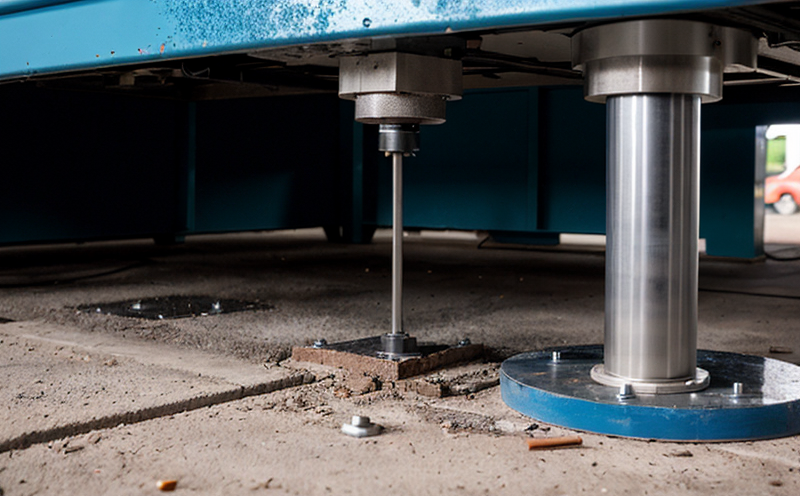ASTM E125 Residual Stress Evaluation by Metallography
The ASTM E125 standard provides a method for evaluating residual stress in metallic materials using metallographic techniques. This service is essential for ensuring the integrity and performance of parts subjected to complex manufacturing processes such as forging, welding, heat treatment, or additive manufacturing (AM). In sectors like aerospace, automotive, and medical devices, where precision and safety are paramount, accurate residual stress measurement can prevent costly failures due to material fatigue or deformation.
Residual stresses in metallic components are typically produced during processing. These internal stresses can lead to distortion of the part geometry and affect its mechanical properties, such as strength and ductility. By employing ASTM E125, laboratories like ours can identify these stresses non-destructively through metallographic examination of polished sections cut from the component.
The process involves preparing a cross-section or longitudinal section of the component to be tested. The surface is then etched with an appropriate etchant to reveal the microstructure. This visualized structure allows for the assessment of stress-induced distortions and their distribution within the material. Once the sample has been prepared, it undergoes detailed examination under a high-powered microscope.
The key steps in this process include selecting the optimal polishing technique, choosing an appropriate etchant to highlight the desired microstructural features, and acquiring clear images of the specimen's surface. Microscopy analysis focuses on identifying changes in grain structure and orientation that can be indicative of residual stress levels. Advanced imaging techniques such as dark-field or differential interference contrast (DIC) microscopy enhance visualization for more accurate determinations.
This service is particularly valuable for industries where part accuracy and dimensional stability are critical, including but not limited to aerospace structures, medical implants, and precision machinery components. Accurate residual stress evaluation helps manufacturers achieve optimal performance by minimizing unwanted distortions and ensuring that parts meet stringent design specifications.
- Identifies internal stresses caused by manufacturing processes
- Promotes the production of high-quality products in critical sectors
- Aids in identifying potential failure points due to stress-induced deformation
- Ensures compliance with industry standards and regulations
Why It Matters
The importance of ASTM E125 cannot be overstated, especially for manufacturers involved in additive manufacturing. AM processes like laser powder bed fusion (LPBF) or electron beam melting (EBM) can introduce significant residual stresses into parts due to the multi-step heating and cooling cycles experienced during construction. These stresses affect the part's dimensional accuracy and mechanical properties.
By employing ASTM E125, manufacturers gain insights into how these stresses might impact their final products. This knowledge allows them to make informed decisions about post-processing steps such as heat treatment or stress relief annealing to mitigate potential issues. Additionally, it enables quality control teams to monitor the manufacturing process more effectively and ensure that parts are within acceptable tolerances.
In critical industries like aerospace and automotive, where even minor deviations from design specifications can have severe consequences, accurate residual stress evaluation is indispensable. It helps maintain high standards of product reliability and safety, reducing the risk of failures in service. Compliance with international standards such as ASTM E125 also enhances a company's reputation and market position.
Customer Impact and Satisfaction
Our customers benefit significantly from our ASTM E125 Residual Stress Evaluation by Metallography service. By providing precise measurements of residual stresses in their products, we help them achieve higher levels of product quality and reliability. This leads to increased customer satisfaction as our clients can confidently deliver parts that meet or exceed industry standards.
Our thorough approach ensures that customers receive comprehensive reports detailing the stress distribution within their components. These reports are invaluable for both quality assurance purposes and ongoing process improvements. They also serve as crucial documentation when meeting regulatory requirements, thereby reducing compliance risks and potential costly penalties.
We work closely with our clients to understand their specific needs and tailor our services accordingly. This partnership approach fosters long-term relationships built on trust and mutual success. Our commitment to excellence in every aspect of our service has earned us a reputation for delivering top-notch results, which contributes directly to customer satisfaction.
Through this service, we contribute to the overall enhancement of manufacturing processes across various sectors. By promoting best practices in residual stress management, we help drive innovation and efficiency within the industry.
Competitive Advantage and Market Impact
- Precision and Reliability: Our ASTM E125 service offers unparalleled precision in evaluating residual stresses, giving our clients a competitive edge. Reliable data on stress distribution allows for more accurate predictions of part behavior under load.
- Compliance Assurance: By ensuring compliance with international standards like ASTM E125, we help companies stay ahead of regulatory changes and maintain their market presence. This reduces the risk of non-compliance penalties and enhances brand reputation.
- Innovation Support: Our service supports continuous improvement initiatives by providing detailed insights into manufacturing processes. This information can be used to optimize processes and develop new products that meet increasingly stringent performance requirements.
- Sustainability Focus: By minimizing the risk of part failures due to stress-induced deformation, our service contributes to more sustainable manufacturing practices. It helps reduce waste and improve resource efficiency.





